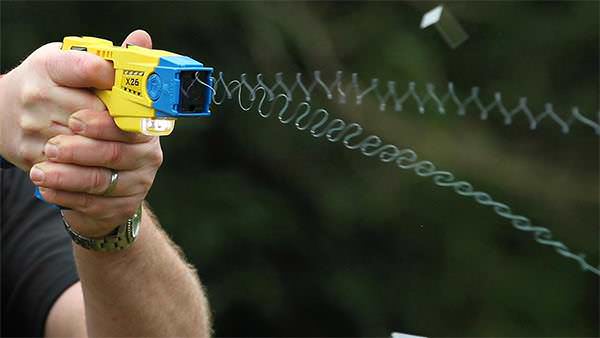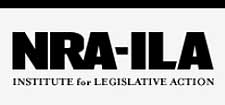

Washington, DC – -(Ammoland.com)- On Monday, the U.S. Supreme Court caught both friends and foes of the Second Amendment off guard with a summary opinion in the case of Caetano v. Massachusetts, ordering the state’s highest court to reconsider its decision that stun guns are not protected under the Second Amendment.
While a clear rebuke to the Massachusetts Supreme Judicial Court for its superficial treatment of the case, it is not, as at least one gun control advocate opined, a “signal” by the Supreme Court’s liberal justices “that they are not eager to overturn Heller.”
Significantly, Caetano was released on the same day the Supreme Court issued another order refusing to hear an appeal in the case of Bonidy v. USPS, which challenged a broad ban on the possession of firearms on postal property, even by customers in their own cars on public parking lots. We detailed that case in an earlier article, which explained that after enforcement of the regulation was limited by the trial court, a divided panel of the U.S. Court of Appeals for the Tenth Circuit upheld the regulation in its entirety in an opinion that was remarkably hostile toward the Second Amendment.
Also significant is that Caetano concerned a non-lethal type of “arm” and featured very sympathetic facts, in this case a homeless victim of domestic violence who possessed a stun gun to prevent further abuse by her former spouse. Even so, the Caetano opinion does not actually invalidate the Massachusetts law. It simply notes the state court’s reasoning “contradicts [Supreme Court] precedent” and directs the state court to reconsider its conclusions based on a proper understanding of the law.
Specifically, the Court held that the state court cannot use the fact that stun guns did not exist at the time of the Second Amendment’s adoption to find that they are not “in common use” or that they are too “unusual” to receive Second Amendment protection. The Court also faulted the state court for relying on the theory that stun guns are not “readily adaptable to use in the military” to find that they fall outside the Second Amendment’s ambit.
Adding intrigue to the Supreme Court’s sudden reengagement with the Second Amendment, Caetano was issued “per curiam,” or “by the court.” Traditionally, this type of unsigned opinion has been reserved for uncontroversial cases that were easily resolved by well-established law, with the assent of the entire court.
The question of stun guns’ status under the Second Amendment presented a novel issue of law in the Supreme Court. This is not an issue that is usually resolved without the briefing or argument typically involved in appellate proceedings. Moreover, Justice Samuel Alito, joined by Justice Clarence Thomas, wrote separately to elaborate on the Massachusetts court’s numerous departures from District of Columbia v. Heller. This indicates a lack of unanimity that would ordinarily make a “per curiam” disposition inappropriate.
Significantly, Justice Alito’s opinion not only argues that the Massachusetts stun gun ban is clearly unconstitutional under Heller, it does so in a way that defeats the reasoning of prior lower court decisions upholding so-called “assault weapon” and “large capacity” magazine bans. He states, for example, that “the relative dangerousness of a weapon is irrelevant when the weapon belongs to a class of arms commonly used for lawful purposes” and that if “Heller tells us anything, it is that firearms cannot be categorically prohibited just because they are dangerous.” Alito also admonishes that a state cannot use relative numbers to establish that a weapon is “unusual” when large numbers (in the case of stun guns, “hundreds of thousands”) are already in use by private citizens for defensive purposes. Finally, Alito preempts the argument that some popular arms can be banned as long as others remain available: “the right to bear other weapons is ‘no answer’ to a ban on the possession of protected arms.”
Unfortunately, while instructive to the lower court, the Alito opinion did not gain enough votes to carry the force of law.
Some pundits are using the Caetano decision as evidence that the Heller decision, even without Justice Scalia’s support, already survives with at least five votes. This in turn would suggest that neither the appointment of Merrick Garland, President Obama’s would-be successor to Justice Scalia, nor even the election of Hillary Clinton, threatens the Second Amendment.
Don’t be fooled. As one article after another has chronicled, the Supreme Court has refused to hear Second Amendment cases involving firearm regulations in the wake of Heller and McDonald v. Chicago. These include cases raising such fundamental questions as the applicability of the Second Amendment outside the home, state bans on America’s most popular rifle, bans on handgun purchases by young adults from federally licensed dealers, or whether cities can require firearms to be locked up and disassembled in the home.
Justices Thomas and Scalia bitterly dissented in some of those decisions, detailing the lower courts’ blatant disregard for Heller’s clear directives.
Moreover, four of the eight sitting justices joined dissents in McDonald, arguing that the court was wrong to recognize an individual right under the Second Amendment and even if that right exists, it is neither “fundamental” nor applies to the states.
Finally, Justice Ginsburg, the leading liberal voice on the court, publicly cited Heller as in league with Dred Scott, one of the most notorious cases in American law in its disregard for the humanity or citizenship of African American slaves and their descendants.
Whatever dynamics underlie the surprise decision in Caetano, it offers no reassurance that Heller would survive if a fifth justice joins the Supreme Court’s liberal wing. And even if they allowed it to stand in theory, they would certainly not attempt to enforce it against the defiance of lower courts. As recent history has shown, even narrowly limiting Heller to its facts allows gun control advocates to pursue their prohibitionist agenda through a variety of persecutory and oppressive means.
Second Amendment advocates should stay vigilant and not be lulled into a false sense of security by Caetano.
Despite its willingness to consider stun guns as an “arm” under the Second Amendment, the Supreme Court’s recent posture regarding Second Amendment cases is cause for great concern. Unless Justice Scalia is replaced by someone who shares his philosophy and worldview when it comes to our right to keep and bear arms, we may not have that right much longer.
About:
Established in 1975, the Institute for Legislative Action (ILA) is the “lobbying” arm of the National Rifle Association of America. ILA is responsible for preserving the right of all law-abiding individuals in the legislative, political, and legal arenas, to purchase, possess and use firearms for legitimate purposes as guaranteed by the Second Amendment to the U.S. Constitution. Visit: www.nra.org
